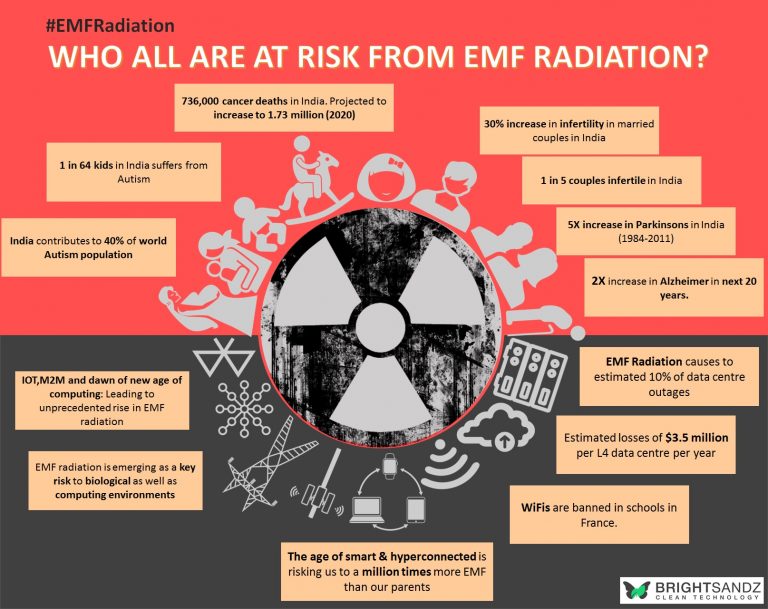The radiation from RF-EMF can cause DNA damage, tissue heating and disrupt the blood-brain barrier. emf radiation are real and ARPANSA is actively engaged with the EHS group, the medical specialists and researchers. The agency will continue review research on the health effects of EMF radiation.
RF-EMF damages DNA
The exposure to electromagnetic fields created by humans (EMFs) is associated with DNA damage as well as health adverse effects. EMFs can alter the intracellular ionic concentrations that are crucial to maintain the electrochemical balance of cells. This can disrupt cell homeostasis, resulting in DNA damage. Moreover exposure to EMFs can also trigger an overproduction of free radicals and reactive oxygen species (ROS).
The exposure to radiation from RF-EMF has been associated with changes in the male germ cell's development. This is due to the differentiation of the germ cell into spermatozoa, aswell maturation of the functional aspect as spermatozoa pass across the epididymis. To investigate the effects of RF-EMF on male germ cell development, a specifically-designed waveguide machine was constructed to expose unrestrained mice to RF EME in the range of 2.2 W/kg.

In a study that was conducted recently, researchers found that exposure to RF-EME triggered oxidative DNA damage in the spermatozoa. Sperm DNA fragmentation increased by 18% after an entire week of treatment and by 23 percent after five weeks. Furthermore, DNA damage in mitochondria was observed by measuring the level of a biomarker, 8-hydroxy-2-deoxyguanosine (8-OH-dG).
However, RF-EMF radiation is not yet considered to be a carcinogen. However, several studies have found that exposure to RF-EMF can affect DNA integrity in a variety of cell types. In one study, scientists were exposed Vero cells to an EMF at 100 Hz over about 45 minutes. They evaluated DNA damage at 48 hours following exposure to determine whether the exposure had a negative effect on DNA integrity.
RF-EMF causes tissue heating
Although the effects of RF EMF are generally believed to have thermal origins, a few studies have revealed that non-thermal influences are also observed. These factors could be responsible for certain of the unsolved findings in epidemiological studies of EMF hypersensitivity. Therefore, it is important to take into account non-thermal effects when conducting an exhaustive review.
Effects that are not thermal from RF-EMF could be mediated by the cell membrane. This is an area which has already been extensively examined. Particularly the electrochemical behavior of cell membranes has been investigated. The current understanding is that RF-EMF energy higher than 1 MHz is transmitted into the tissues through dielectric dissipation and ionic discharge. Previous theoretical analyses indicated that the energy that is transferred to the tissue could be up to 200 kV/m.
The electrical properties of tissues are controlled in the form and quantity of water molecules and ions and other molecules in the body. This determines how absorbent RF EMR is by different tissues. Organs with greater conductivity are likely to absorb more of the field, and thus cause more of an impact. This is the reason why the amount of heating in tissues does not increase steadily from outside to inside the body, but occurs in hot areas. Bone and fatty tissue are less susceptible to RF heating than other tissues because they are low in water content.
The depth of the field's penetration depends on the strength and frequency of field. Muscle tissue absorbs more field energy than other tissues, and transforms it into heat more efficiently. Usually the depth of penetration for RF EMF is determined by millimeters (mm). But, the greater the frequency, the deeper the penetration.
RF-EMF causes blood-brain barrier disruption
Researchers have discovered that RF-EMF can disrupt the blood-brain barrier changing sleep patterns as well as neurotransmitter levels. In addition, the effects that EMF on brain activity are linked to neurodegenerative disorders. For instance, EMF from mobile phones can alter electroencephalogram activity as well as sleep patterns, and the actions of nitric Oxide and xanthin oxidase.
Researchers at Vienna University have studied the effects of exposure to RF-EMF in brain cells. what is emf radiation looked at the effects of ELF EMFs on the nervous system. Though the cellular mechanisms involved are not completely comprehended however, there is an obvious connection between exposure to ELF-EMF and depletion of myelin. This relationship might account for the electro-hypersensitivity symptoms of electro-hypersensitivity. However, there are tested methods to regenerate myelin in the brain.
Researchers have observed that exposure to frequencies of 900 millimeters EMF caused a rise in the permeability of BBB and caused an increase in the signs of neuronal injury in rats. They also observed increased extravasation of albumin into neurons. Further, they found that after 30 minutes of 900 MHz exposure 99mTcMIBI increased its diffusion to the cerebral cortex. But, what is emf radiation did not occur with Evans blue-based injections.
However, RF-EMF has no clear mechanism for disrupting the BBB. Research suggests that EMF exposure increases erythrocyte membrane permeability, which may influence the BBB and enhance calcium ion efflux. Furthermore, the presence a 99mTcMIBI radiotracer inside the brain has been linked to an increase in the permeability of the BBB.
